5 Most Common Ants in Australia


Australia is home to a remarkably diverse array of ant species, showcasing a fascinating range of characteristics and behaviours.
From the industrious black house ants to the formidable green-headed ants, these tiny creatures have adapted to various environments across the country.
By understanding the identification, range, and behaviours of these ants, individuals can navigate their surroundings with greater awareness and appreciation.
This knowledge allows us to take proactive measures to prevent ant bites and mitigate potential discomfort. By fostering a deeper understanding of the diverse ant population in Australia, we can contribute to the preservation of the delicate balance of the ecosystem.
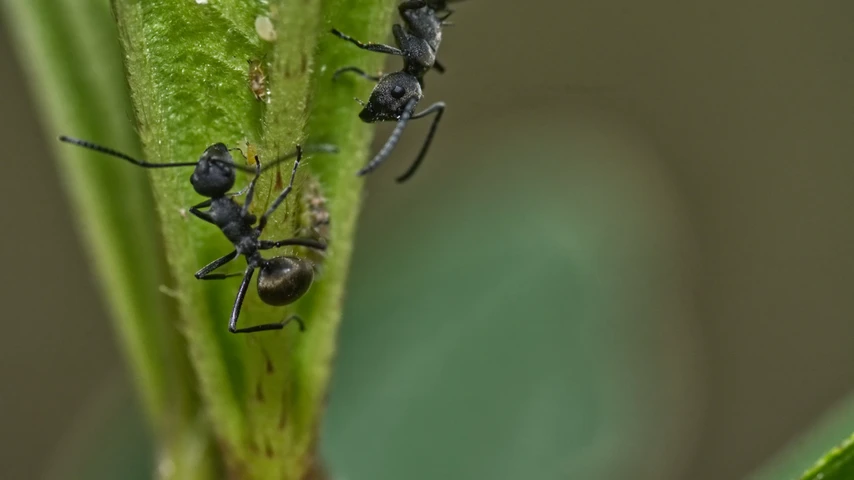
The Black House Ant is a small ant found in households and urban areas worldwide. It's named for its dark brown or black colour. Measuring 2-3 mm, it has a slender body and a three-segmented waist, making it easily recognizable among other ant species.
Range/Location: These ants are found throughout Australia, particularly in urban areas, nesting indoors or outdoors in soil, walls, and woodwork.
Biting Potential: Black House Ants do not typically bite humans unless provoked, but they can be a nuisance when they invade kitchens and pantries.
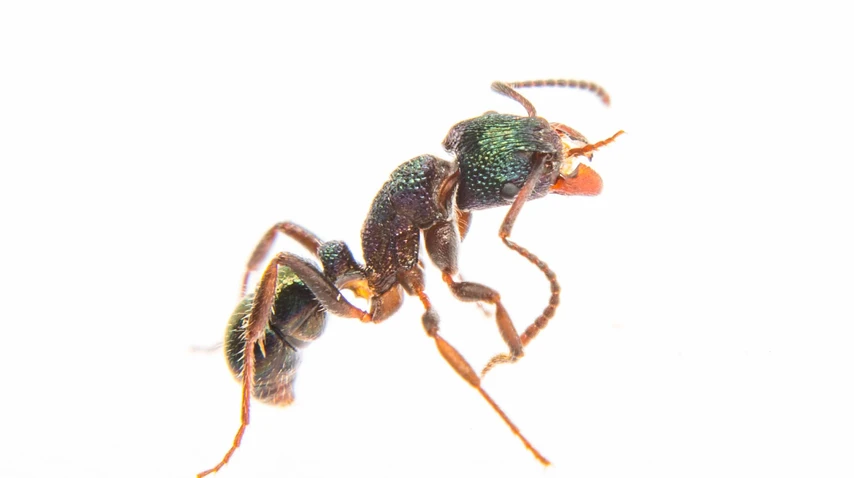
The Green Headed Ant, also known as the Metallic Sugar Ant, is easily identifiable by its metallic green head and dark brown body. They are larger than the Black House Ant, measuring around 6-10 mm in length.
Range/Location: These ants are widespread across Australia, particularly in coastal regions. They often nest in soil, leaf litter, or rotting wood.
Biting Potential: Green Headed Ants possess a powerful sting and can inflict painful bites if disturbed or threatened.
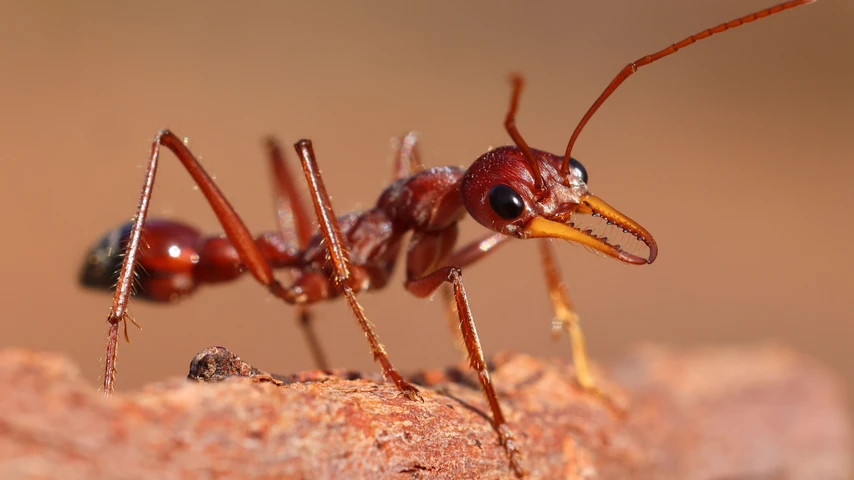
Bull Ants are large and robust, ranging from 15-36 mm in length. They have a reddish-brown or black coloration and possess long mandibles. They are known for their aggressive behavior and strong bite.
Range/Location: Bull Ants are found throughout Australia, particularly in forests, woodlands, and urban areas with ample vegetation.
Biting Potential: Bull Ants are aggressive and known for their painful bites. They will attack if they perceive a threat to their nests or when provoked.
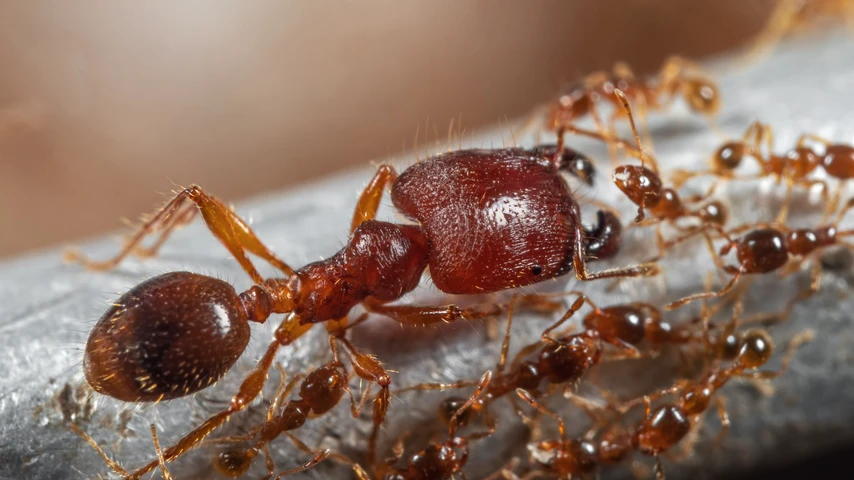
The Coastal Brown Ant is a small species, typically measuring around 2-3 mm in length. It is also known as a Big Headed Ant. It is characterized by its brown coloration and relatively large head compared to its body size. Despite its small stature, it can be easily identified by these distinctive features.
Range/Location: These ants are commonly found in coastal regions of Australia, including gardens, parks, and urban areas. They nest in soil or in protected spaces like cracks in the pavement.
Biting Potential: Coastal Brown Ants are generally non-aggressive and do not bite humans, but they can become a nuisance when they invade buildings in search of food.
We run certified First Aid courses throughout all major Australia citys. Find a location near you.
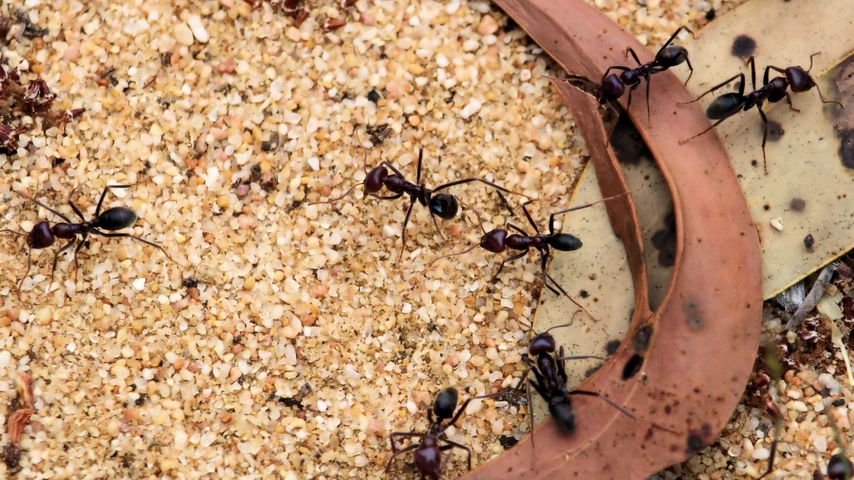
Meat Ants, also known as Iridomyrmex purpureus, exhibit significant variation in size, typically ranging from 5 to 15 mm in length. They can be identified by their reddish-brown or black coloration. These ants are known for their tendency to gather in large numbers, forming conspicuous colonies in various habitats.
Range/Location: These ants are found throughout Australia, particularly in open areas such as grasslands, pastures, and gardens. They build large nests in soil or under rocks.
Biting Potential: Meat Ants can bite when their nests are disturbed or if they perceive a threat. While their bites can be painful, they are generally not aggressive towards humans.
In the event of an ant bite, it is important to administer appropriate first aid to alleviate discomfort and prevent complications. The following general first aid measures can be applied:
Ants are a diverse and integral part of the Australian ecosystem. While most ants are harmless, some species can deliver painful bites that may cause discomfort or allergic reactions.
By understanding the identification, range, and behaviour of common ants, individuals can better avoid unnecessary encounters and be prepared to handle ant bites effectively.
it is crucial to raise awareness about the importance of preserving the ecosystem and the role ants play in maintaining ecological balance.
By appreciating the intricate relationships between ants, plants, and other organisms, we can foster a greater sense of respect and responsibility towards our environment. Furthermore, acquiring knowledge in first aid techniques, including the treatment of ant bites, is a valuable skill for everyone.
Undertaking a first aid course equips individuals with the necessary skills to provide immediate care during emergencies, ensuring the well-being of themselves and others. By investing in first aid training, we can enhance our preparedness and contribute to a safer and healthier community.
Remember, prevention is key.
By understanding ant behaviour, respecting their habitats, and taking necessary precautions, we can coexist harmoniously with these fascinating creatures while minimizing the risk of ant bites and their associated complications.

March 11, 2025
Darwin, the tropical capital of Australia’s Northern Territory, is home to a rich diversity of wildlife - including an impressive array of spiders. From the sprawling webs of golden orb-weavers to the cryptic camouflage of trapdoor spiders, these arachnids play a vital role in the local ecosystem. While some may inspire fear, the majority are harmless and even beneficial, helping to control insect populations.

September 4, 2024
Cat bites, while often underestimated, can lead to serious health complications if not treated promptly and properly. Cats' mouths harbour a variety of bacteria that can cause infections in humans.

April 1, 2024
Encounters with wildlife can often be thrilling, but when it comes to the creature known as the drop bear, the experience can quickly turn dangerous. A sharp increase in recent attacks prompts the need for understanding proper first aid procedures in case of an attack.